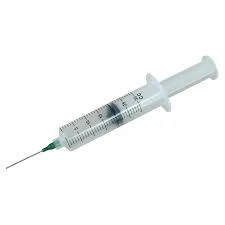Women who lead a sedentary lifestyle have faster ageing cells than
those who exercise every day. These are the findings of a study
published in the ‘American Journal of Epidemiology’. According to the
study, as people age, their cells age, causing DNA protectors to shorten
and fray.
The researchers from California noted that health and lifestyle factors may speed up the process. A sedentary lifestyle is a type of lifestyle with no or irregular physical activity.
A person who lives a sedentary lifestyle may colloquially be known as a couch potato or in the Nigerian parlance 'ajebo'. It is commonly found in both the developed and developing world. Sedentary activities include sitting, reading, socialising, watching television, playing video games, mobile phone and computer use for much of the day with little or no vigorous physical exercise.
A sedentary lifestyle can contribute to many preventable causes of death. The ‘BBC’ reported that the research on 1,500 women aged 64 to 95 found those who spent many hours sitting and exercised for less than 40 minutes a day had cells that were biologically eight years older.
The researchers similarly suggested that even in old age, it was important to keep active and avoid sitting for more than 10 hours a day. “During ageing, tiny caps on the ends of DNA strands known as telomeres naturally shorten.
“These telomeres – which have been likened to the plastic tips of shoelaces – are there to prevent chromosomes from deteriorating.
Telomere length is one indicator of biological age, which does not always match chronological age. Shortened telomeres have been linked with an increased risk of cardiovascular disease, diabetes and major cancers. How much regular exercise people do now also appears to be a factor in their length.
To track the women’s movements in the study, they wore an accelerometer on their right hip for seven days in a row, during the day and night.
They were also asked to complete questionnaires on their activity. Reacting to the development, lead study author, Dr. Aladdin Shadyab from the University of California, San Diego School of Medicine, said: “We found that women who sat for longer did not have shorter telomere length if they exercised for at least 30 minutes a day.
“Discussions about the benefits of exercise should start when we are young, and physical activity should continue to be part of our daily lives as we get older, even at 80 years old.” Medical experts advised older adults to break up long periods of sitting with light activity because “sedentary behaviour is now considered an independent risk factor for ill health.”
The study urged adults aged 65 or older who are generally fit and mobile should try to do at least 150 minutes of moderate aerobic activity, such as cycling or walking, every week and strength exercises on two or more days a week that work all the major muscles (legs, hips, back, abdomen, chest, shoulders and arms).
Similarly, it said older adults at risk of falls, or with poor balance, should also do exercises to improve balance and co-ordination at least twice a week.
The researchers from California noted that health and lifestyle factors may speed up the process. A sedentary lifestyle is a type of lifestyle with no or irregular physical activity.
A person who lives a sedentary lifestyle may colloquially be known as a couch potato or in the Nigerian parlance 'ajebo'. It is commonly found in both the developed and developing world. Sedentary activities include sitting, reading, socialising, watching television, playing video games, mobile phone and computer use for much of the day with little or no vigorous physical exercise.
A sedentary lifestyle can contribute to many preventable causes of death. The ‘BBC’ reported that the research on 1,500 women aged 64 to 95 found those who spent many hours sitting and exercised for less than 40 minutes a day had cells that were biologically eight years older.
The researchers similarly suggested that even in old age, it was important to keep active and avoid sitting for more than 10 hours a day. “During ageing, tiny caps on the ends of DNA strands known as telomeres naturally shorten.
“These telomeres – which have been likened to the plastic tips of shoelaces – are there to prevent chromosomes from deteriorating.
Telomere length is one indicator of biological age, which does not always match chronological age. Shortened telomeres have been linked with an increased risk of cardiovascular disease, diabetes and major cancers. How much regular exercise people do now also appears to be a factor in their length.
To track the women’s movements in the study, they wore an accelerometer on their right hip for seven days in a row, during the day and night.
They were also asked to complete questionnaires on their activity. Reacting to the development, lead study author, Dr. Aladdin Shadyab from the University of California, San Diego School of Medicine, said: “We found that women who sat for longer did not have shorter telomere length if they exercised for at least 30 minutes a day.
“Discussions about the benefits of exercise should start when we are young, and physical activity should continue to be part of our daily lives as we get older, even at 80 years old.” Medical experts advised older adults to break up long periods of sitting with light activity because “sedentary behaviour is now considered an independent risk factor for ill health.”
The study urged adults aged 65 or older who are generally fit and mobile should try to do at least 150 minutes of moderate aerobic activity, such as cycling or walking, every week and strength exercises on two or more days a week that work all the major muscles (legs, hips, back, abdomen, chest, shoulders and arms).
Similarly, it said older adults at risk of falls, or with poor balance, should also do exercises to improve balance and co-ordination at least twice a week.



























